Now i have fitted my ccts i feel confident to attempt something else. Im going to replace fork springs and oil, but want to know the easiest and cheapest method of polishing them up as they are scabby.
Thanks in advance.
Fork polishing
- benny hedges
- Posts: 6110
- Joined: Sun Oct 18, 2009 5:09 pm
- Location: Warrington
Re: Fork polishing
tbh you'd be better off cleaning them up with nitromors & wire wool and respray them up... if you polish them they'll look great but you'll have to polish them every other ride, unless you lacquer them proper...
did mine with jcb satin black paint & theyve done ok so far.
did mine with jcb satin black paint & theyve done ok so far.
You do not have to say anything. But it may harm your defence if you do not mention when posting something which you later rely on in quote. Anything you do say may be ripped to sh*t.
Re: Fork polishing
I'm thinking of polishing my lowers too. Are the castings smooth or do they have a sort of stippled effect? What colour are they ... they look the same as the wheels .... that was called light pearl or something. It's silvery with a goldish hue .... that's a nice word .... hue 
Whatever, I want a bit of black on there as well ... just at the base around the spindle and pinch bolts
Whatever, I want a bit of black on there as well ... just at the base around the spindle and pinch bolts
Last edited by SWAGGER on Sun Dec 05, 2010 9:53 pm, edited 1 time in total.
The force is strong with this one!!!
Yamaha XT1200Z Super Tenere
Yamaha FJR1300
Yamaha XT1200Z Super Tenere
Yamaha FJR1300
Re: Fork polishing
Hi I polished mine myself with a polisher and sprayed the lowers looks good but need to do them again. Did my swinging arms as well and footrest good look 
RIDE TO ENJOY
Re: Fork polishing
I polished mine, it took about 16 hours for each side and that was not in one hit as I was replacing the springs etc I did it over the winter in my kitchen.
In all I used fine metal file, 80 grit, 160 grit, 320 grit, 600 grit, 1000 grit, 1500 grit, 2500 grit and a high finish meatal polish to finish. the more stages you use the better finish you get, and having a large leap between grits means that you have to work harder to remove that scratches from the last grit.
Hope this helps;
First off I started with a metal file to remove the texture effect of the original casting
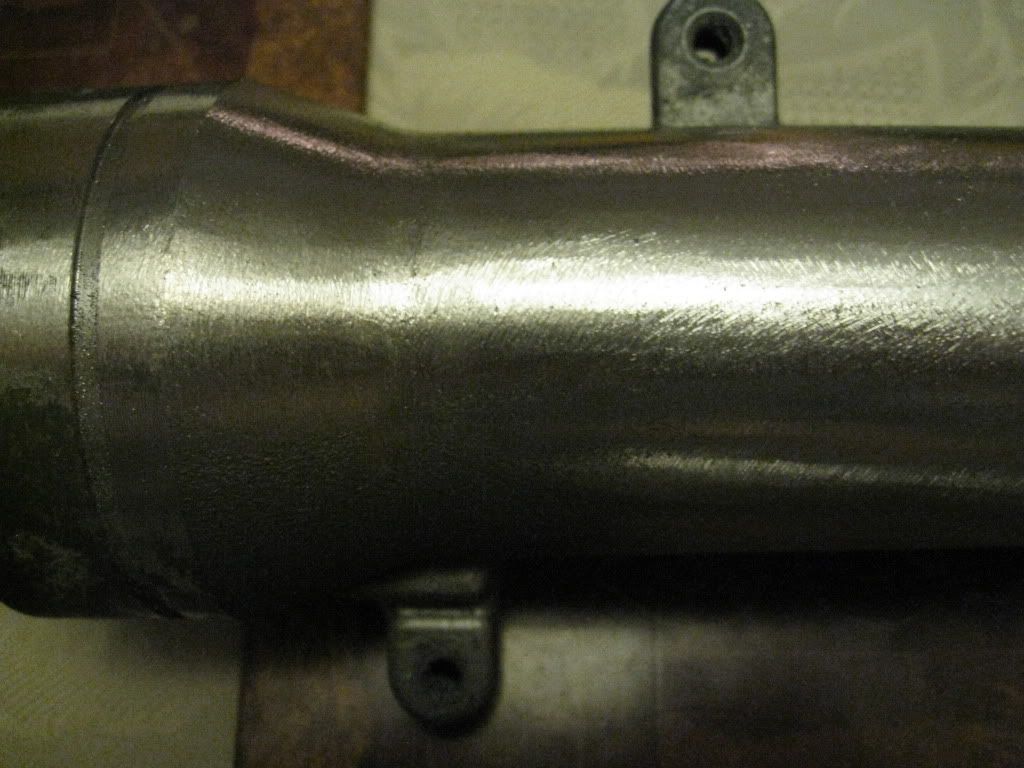
Top is the original after nitromorse, below is with the fine metal file

Left again is the original as a reference, right is with 80 grit wet n dry

next I used 160 grit wet n dry
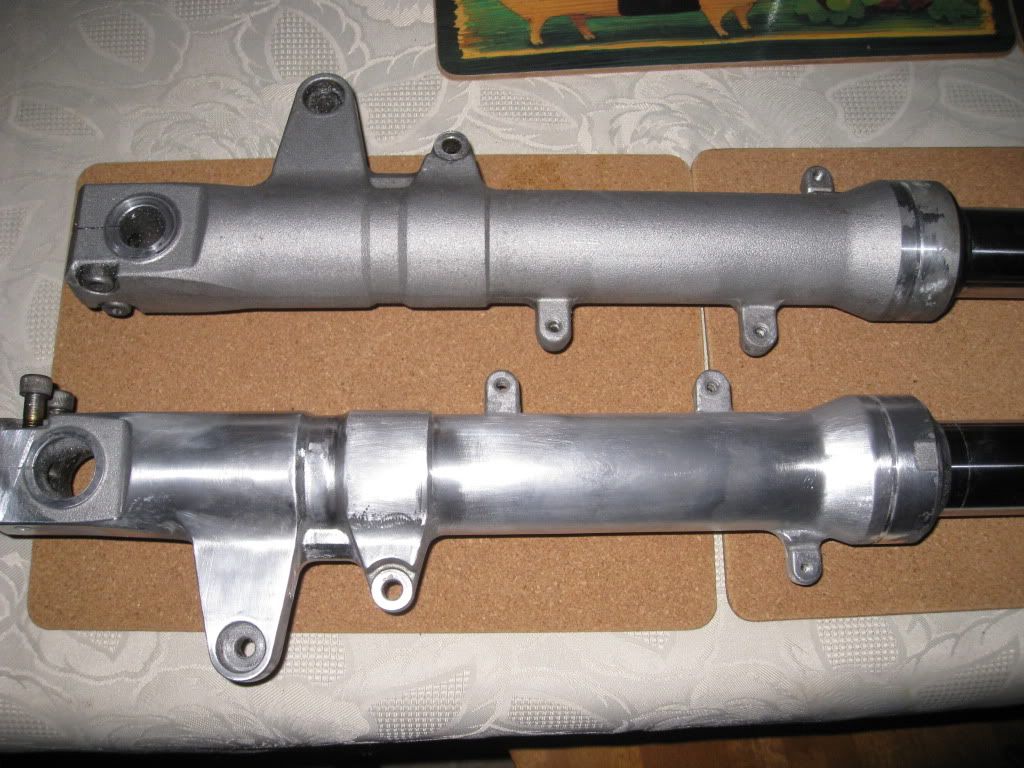
160 grit wet n dry close up, as you can see there are still alot of scratches from the 80 grit
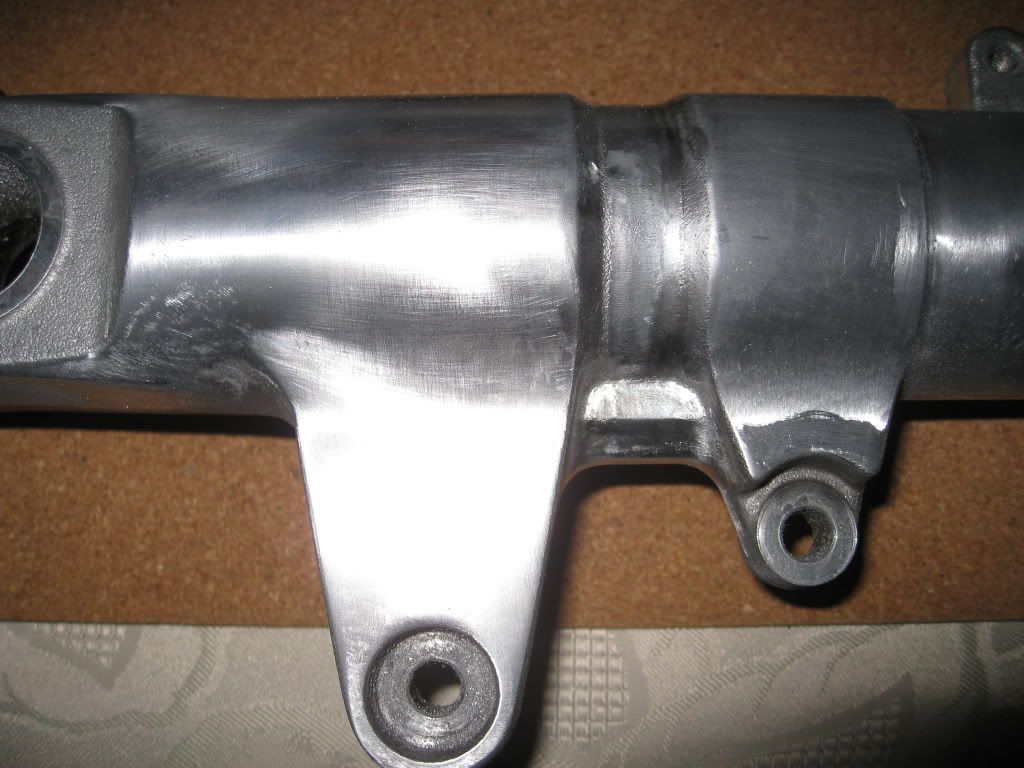
original again as a comparison
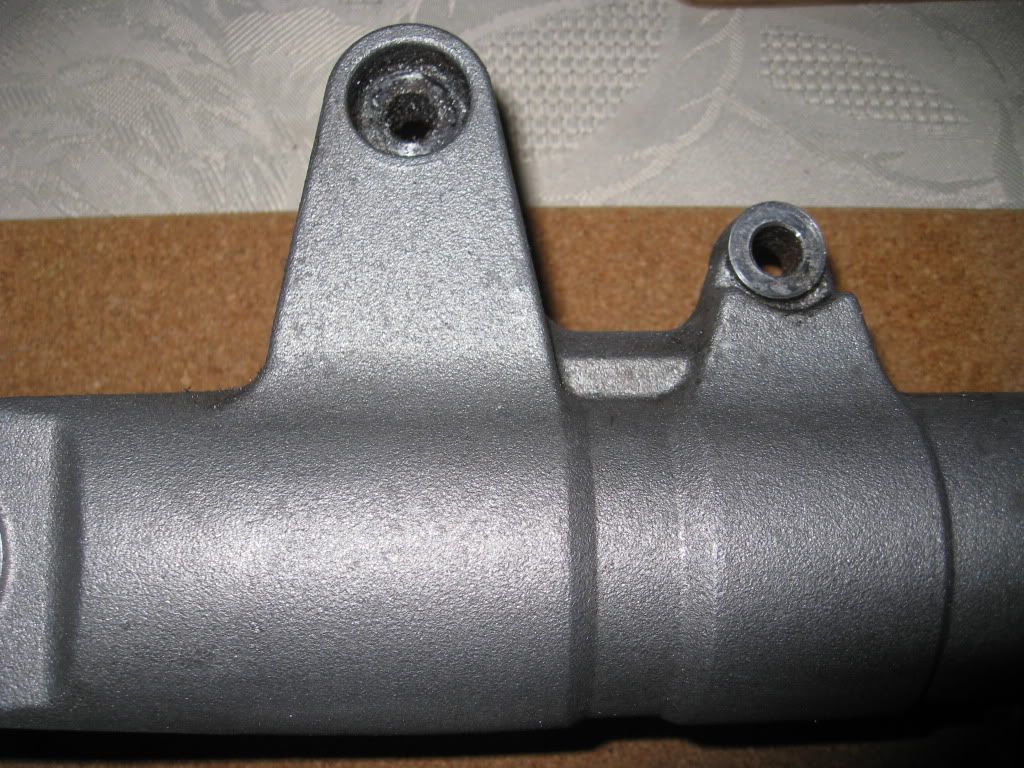
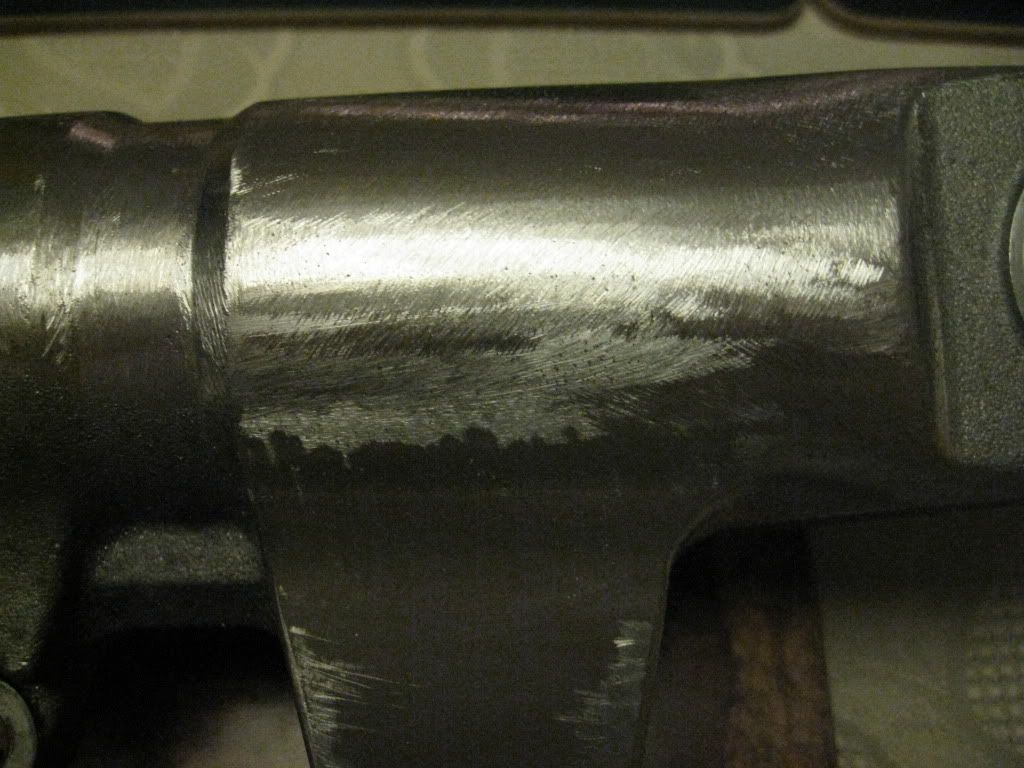
Top is 160 along with the bottom as a comparision that's nearly finished
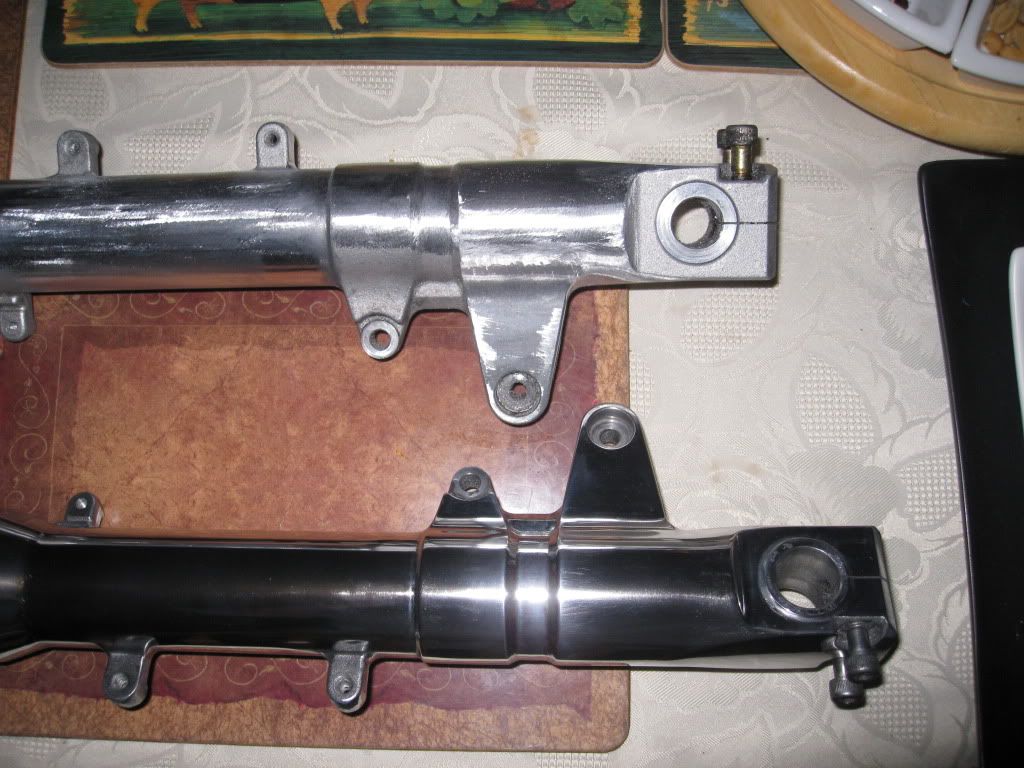
Finished, just needs finalising with meguairs metal polish
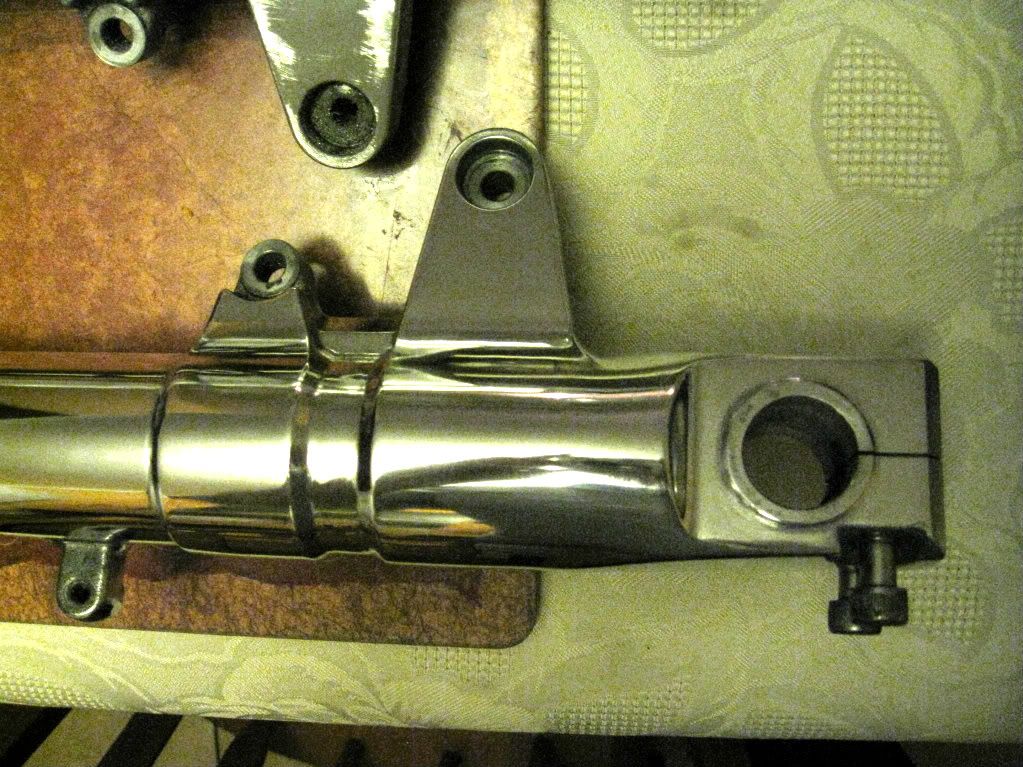
Another comparision

In all I used fine metal file, 80 grit, 160 grit, 320 grit, 600 grit, 1000 grit, 1500 grit, 2500 grit and a high finish meatal polish to finish. the more stages you use the better finish you get, and having a large leap between grits means that you have to work harder to remove that scratches from the last grit.
Hope this helps;
First off I started with a metal file to remove the texture effect of the original casting

Top is the original after nitromorse, below is with the fine metal file

Left again is the original as a reference, right is with 80 grit wet n dry

next I used 160 grit wet n dry

160 grit wet n dry close up, as you can see there are still alot of scratches from the 80 grit

original again as a comparison


Top is 160 along with the bottom as a comparision that's nearly finished

Finished, just needs finalising with meguairs metal polish

Another comparision

Re: Fork polishing
I used a flap wheel in a drill, (or on a flexible drive) saves a lot of time and energy.
You still have to finish by hand, but with a selection of grit wheels the majority is done a lot quicker.
And unless you want to re-polish after each ride, use plenty of lacquer coats.
Oh, and don;t spray lacquer when the workpiece is too cold - mine went cloudy, but I was bored by then and fitted them anyway.
- mine went cloudy, but I was bored by then and fitted them anyway.
I'll do it properly next time
Or (method 2):
1. Fill an old welly boot with Hammerite.
2. Dip fork legs in (you don't even need to take them off the bike for this method, just remove front wheel, mudguard and brakes)
3. Watch paint dry
4. reassemble
5. admire results
You still have to finish by hand, but with a selection of grit wheels the majority is done a lot quicker.
And unless you want to re-polish after each ride, use plenty of lacquer coats.
Oh, and don;t spray lacquer when the workpiece is too cold
I'll do it properly next time
Or (method 2):
1. Fill an old welly boot with Hammerite.
2. Dip fork legs in (you don't even need to take them off the bike for this method, just remove front wheel, mudguard and brakes)
3. Watch paint dry
4. reassemble
5. admire results
It's not falling off, it's an upgrade opportunity.
Re: Fork polishing
I Would expect option two to come from a bloke that uses duck tape to change his bikes paint colour.
LOL
LOL
Re: Fork polishing
Just like me, it's lovely on the inside.
It's not falling off, it's an upgrade opportunity.
